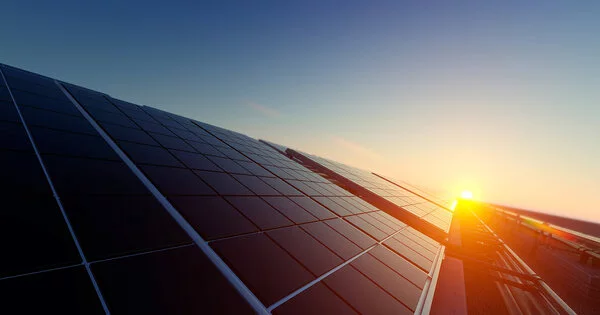Because solar panels require sunlight to generate electricity for your home, they do not generate electricity during the night. As a result, the short answer is no. The idea behind solar power working at night is based on backup batteries.
A solar panel system’s purpose is to absorb sunlight and convert direct current (DC) power to alternating current (AC) power, which is what your house is powered by. If the system generates more electricity than you require to power your home, the surplus is fed back into the power grid.
Researchers created a photovoltaic cell that harvests energy from the environment during the day and night by utilizing heat emitted by the Earth back into space. Solar cells radiate and lose heat to the sky at night, reaching temperatures a few degrees below ambient air. A thermoelectric module is used in the device under development to generate voltage and current from the temperature gradient between the cell and the air. The setup is inexpensive and, in theory, could be integrated into existing solar cells.
Approximately 750 million people worldwide do not have access to electricity at night. Solar cells provide power during the day, but storing energy for later use necessitates a significant amount of battery storage.
You want the thermoelectric to have very good contact with both the cold side, which is the solar cell, and the hot side, which is the ambient environment. If you don’t have that, you’re not going to get much power out of it.
Sid Assawaworrarit
In Applied Physics Letters, published by AIP Publishing, Stanford University researchers built a photovoltaic cell that harvests energy from the environment during the day and night, eliminating the need for batteries entirely. The device makes use of heat leaking from Earth back into space, which has the same energy density as incoming solar radiation.
Solar cells radiate and lose heat to the sky at night, reaching temperatures a few degrees below ambient air. A thermoelectric module is used in the device under development to generate voltage and current from the temperature gradient between the cell and the air. This process is dependent on the system’s thermal design, which includes a hot and cold side.
“You want the thermoelectric to have very good contact with both the cold side, which is the solar cell, and the hot side, which is the ambient environment,” said author Sid Assawaworrarit. “If you don’t have that, you’re not going to get much power out of it.”

The team demonstrated power generation in their device during the day, when it runs in reverse and contributes additional power to the conventional solar cell, and at night. The setup is low-cost and, in theory, could be integrated into existing solar cells. It is also simple, making construction in remote locations with limited resources possible.
“What we managed to do here is build the entire thing from off-the-shelf components, have a very good thermal contact, and the most expensive thing in the whole setup was the thermoelectric itself,” said author Zunaid Omair.
Using electricity at night for lighting requires a few watts of power. The current device generates 50 milliwatts per square meter, which means lighting would require about 20 square meters of photovoltaic area.
“None of these components were specifically engineered for this purpose,” said author Shanhui Fan. “So, I think there’s room for improvement, in the sense that, if one really engineered each of these components for our purpose, I think the performance could be better.”
Net metering is one of the most important reasons that home solar panel systems are a good investment. When your solar panels generate excess power, it is fed back into the grid. The utility company compensates you for producing that energy by crediting your account. Then, when you need to use the grid for power, such as at night when your panels are not producing energy, you use the credits rather than paying for the energy you consume out of pocket.
The team’s goal is to improve the device’s thermal insulation and thermoelectric components. They are investigating engineering improvements to the solar cell itself in order to improve radiative cooling performance while retaining solar energy harvesting capability.
















